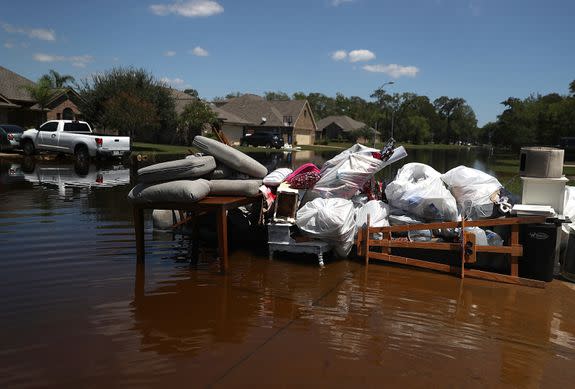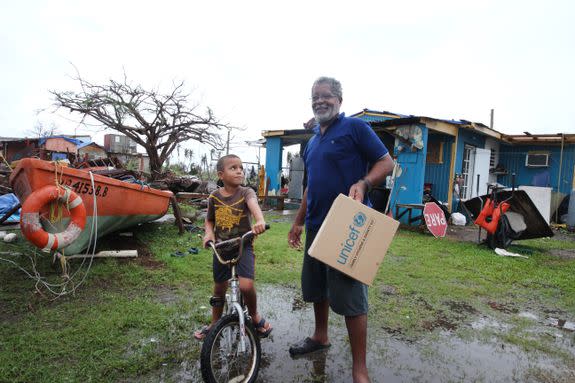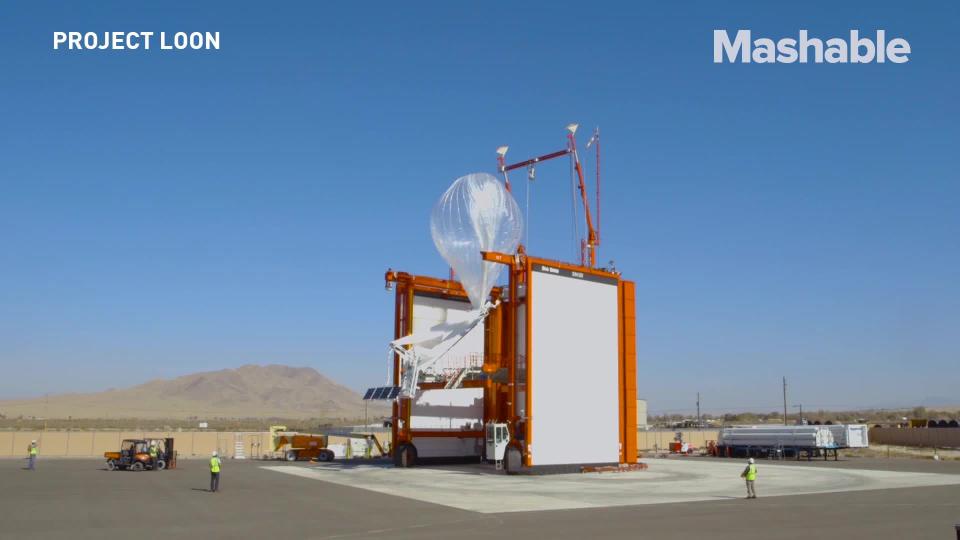Disaster relief is about more than healing physical trauma. It's about emotional recovery too.

Disaster relief is most commonly thought of as providing food, water, and shelter to those affected by calamitous events beyond their control.
But as communities in places like Texas and Puerto Rico are learning, disaster relief that only alleviates physical wants is not enough to put their communities back on their feet.
After first responders have done their jobs to secure personal safety, an emotional recovery has to begin as well.
Organizations like UNICEF are acknowledging that the damage to communities can last long after the repairs to homes are completed.

Image: Getty Images
“When the reality of the disaster sets in, the emotional and psychological responses that are seen community-wide are tremendous and overwhelming,” Center for School Behavioral Health director Janet Pozmantier said. “People simply don’t have the wherewithal to cope effectively.”
That's where organizations like UNICEF are stepping in. Called psychosocial disaster relief, this kind of help comes in the weeks and months after a disaster in order to help people recover emotionally.
If UNICEF can help it, these recovery efforts will be implemented after every storm.
Psychosocial relief in the wake of Hurricanes Maria and Harvey are currently ongoing, and UNICEF knows that the aftermath of Hurricane Florence in the Carolinas will also require this kind of help in the near future.
Other organizations like the Red Cross have also been championing psychological first aid measures for years, and with good reason.
SEE ALSO: Hurricane Maria is the deadliest storm of the 21st century
Research suggests that those who have survived catastrophe tend to start showing signs of trauma roughly three months after the event took place. Those signs can look like anything from anxiety and depression to constant irritability and anger or even complete dissociation and inattention in both children and adults.
In order to combat these symptoms, Pozmantier and other staff at the center working under Mental Health America in Greater Houston developed free workshops to teach others how to effectively help people struggling in the aftermath of traumatic disaster-related events.

Image: Getty Images
The workshop focuses on helping educators identify signs and symptoms of trauma in children while also including other useful tools like mindfulness training and how to self-regulate emotions.
After Hurricane Harvey made landfall in Texas, UNICEF reached out to the center and offered to fund a Harvey-specific trauma training workshop, which the center named Are the Kids Alright?
In the months after Harvey made landfall in Texas, Pozmantier would drive through neighborhoods and see the entire contents of homes in a pile on the curb — family photos and clothing laying on top of piles of water damaged furniture — all ready to be collected by waste management.
She said it was easy to understand why people would be traumatized.
So when the center developed Are the Kids Alright, aside from training people to deal with trauma in children, they also added some training on how to deal with adults.
“Going through something like this, I realized more than ever that if we can take care of the adults, the kids are going to be okay for the most part too,” Pozmantier said.
Nine months later, when UNICEF approached the center again to help Puerto Rico recover, the message was the same.
The center developed a workshop, completely in Spanish, to help curb the emotional impact Hurricane Maria had on the people of Puerto Rico, focusing again on children — but also providing help to adults.
First, UNICEF sent hygiene kits, water, and helped with shelter. But what UNICEF USA President Caryl Stern said she’s most proud of is the collaborative work that UNICEF and the Center for School Behavioral Health were able to put into action.

Image: unicef usa
“Now classrooms are catastrophe stations every time it rains in Puerto Rico. The children are worried that their home is destroyed. Or they’re wondering 'Is my mother okay?'” Stern said.
Even seeing adults in distress can trigger the children, Stern said.
Once Stern experienced this, she said she knew that the training workshops would be incredibly important.
In addition to the workshops, UNICEF sent a few hundred college students from State University of New York and City University of New York to pair up with member of various Puerto Rican communities to help rebuild the Boys and Girls Clubs of Puerto Rico.
Through this, people were able to come together and repair their communities themselves — something that can have a strong positive effect on the psyche.
Stern says everyone who has ever dealt with disaster relief knows that the psychosocial recovery is the most import aspect of relief that is widely ignored by the public.
Pozmantier agreed, adding that if she could, she would mandate that all educators go through training in mental health, trauma, mindfulness, and self-help strategies.
“They are the first line of defense. It’s like any other kind of illness. You wouldn’t wait until you’re on your deathbed to try and strengthen your immune system,” Pozmantier said.
WATCH: Puerto Rico is recovering cell service... with balloons

